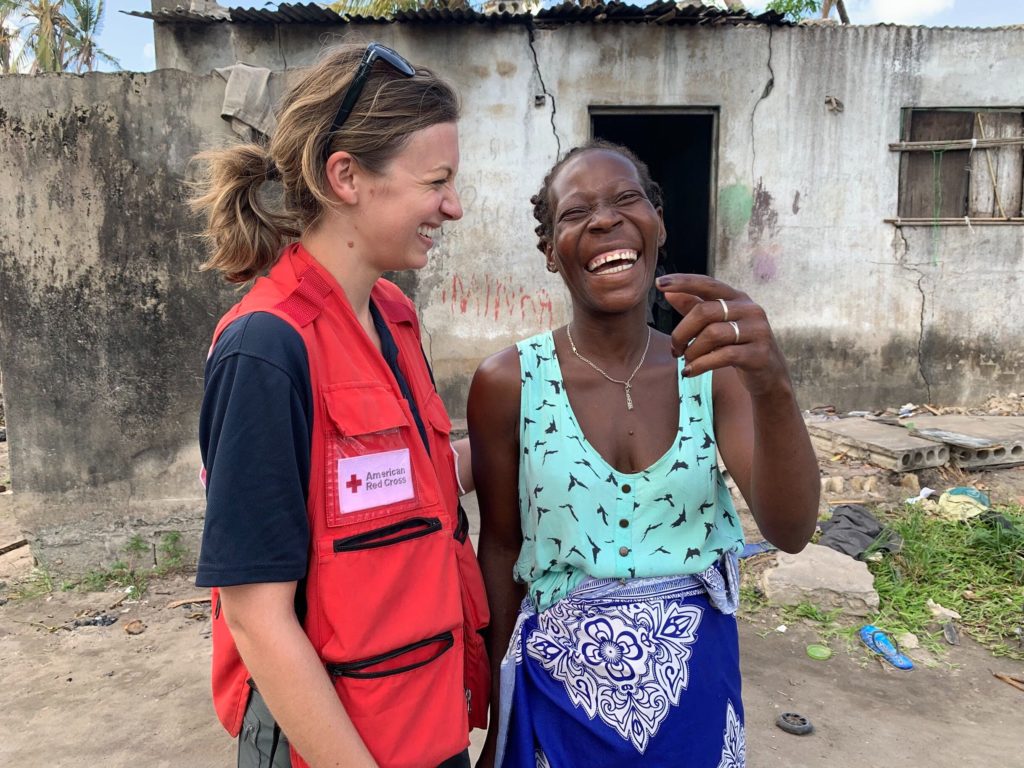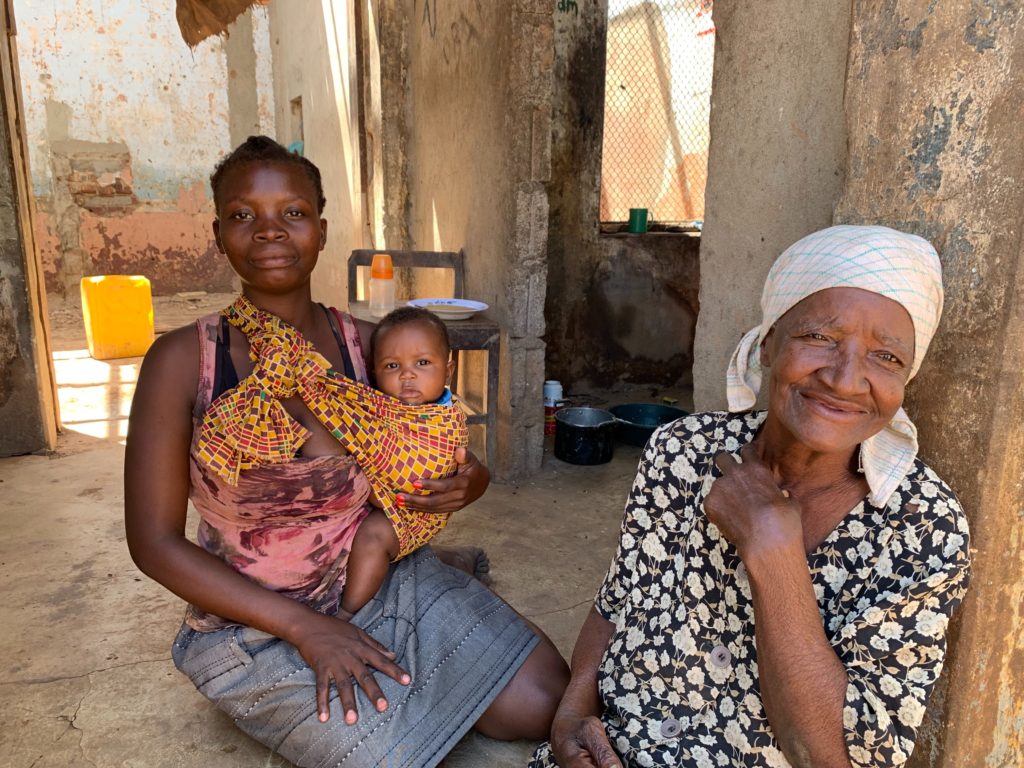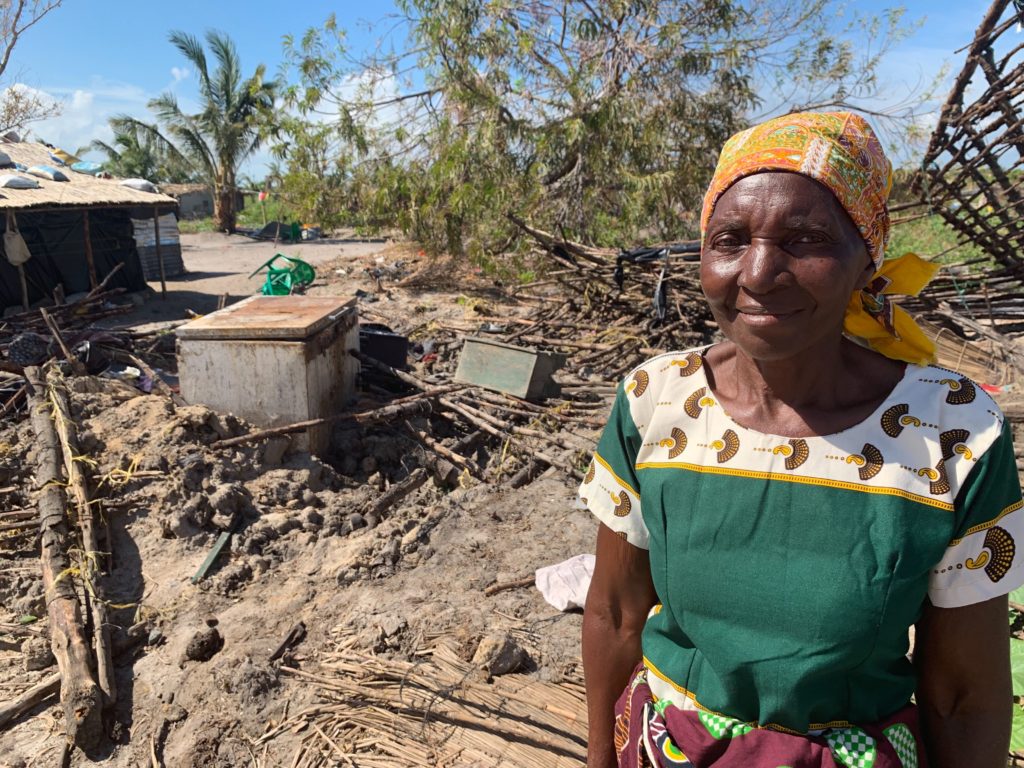The thunder of a small biplane has just roared overhead as I look out the window. A sound that never phased me before my most recent disaster deployment, it now elicits a wave of sensations. In a flash, I’m transported back to our Emergency Operations Center—oceans away in Mozambique.
In a span of six weeks, two cyclones of hurricane strength pummeled the people of southeastern Africa. First by Cyclone Idai, followed by Cyclone Kenneth to the north—pinning the region back on the map of current events the world wanted to know about.

After a 40-hour trip from Chicago, I arrived just after the first storm wiped out 90 percent of the dense coastal city of Beira. My mission: To help the Mozambique Red Cross raise awareness about humanitarian needs and empower survivors of the storm tell their stories.
Our Red Cross basecamp tents lay adjacent to eleven tons of relief supplies being loaded systematically onto cargo planes, ready for airdrop. On my daily journey to the base, my eyes became locked downwards, scouting where my boots stepped, keeping watch for cobras per the security briefing I received on my first day. “And keep an eye out for crocodiles in the river. But don’t forget, the number one killer in all of Mozambique is the mosquito.” Extra stocks of malaria medication were in all of our delegate kits.
Since 2010, I have proudly worn my American Red Cross vest as a volunteer. This emblem is the only thing that has stood between me and the stories of disaster survivors released in the rawest form. I witness pieces of lives turned upside down, unfiltered. They roar from the tongues of mothers who have gone through hell protecting their children, and dance from the feet of toddlers running in circles, grasping at my pant legs in between their little panting breaths. I enter their world as a visitor, often leaving with more questions than answers.
Glimpsing into one Father’s Eyes
It is my second full day in Beira. I stand in a straight line, one of nine relief workers waiting to board the helicopter headed to Buzi, an area entirely inaccessible by road weeks after the first cyclone hit.
One by one, we step forward as our names are called. I watch each of the international agencies represented by the logos on our vests and am reminded of the enormous scale of this relief effort—Save the Children, USAID, World Food Programme, UNICEF, OCHA, Red Cross Red Crescent. We have flown from around the globe to support local teams attempting to reach the 1.5 million people affected by the storm.
I grab a pair of red earphones strung on a wire above the seats in the helicopter and keep them around my neck until we are ready for lift off. The smell of fuel meets my nose as I watch the lopsided, windstruck palms grow smaller out the porthole window.
A half hour later, we begin our descent over the latte colored Buzi River, peering into homes and businesses standing naked without roofs. These parts of life were not meant to be exposed, the entire town an open wound. I spend the day talking with local residents to learn what they need so I can report back to my team. At first glance, I see a line of people waiting peacefully. Looking closer, I see that one by one, they are receiving free cholera vaccines from a local nurse, a promising sign as the disease quickly turned into an outbreak—leaping from five to 5,000 cases within weeks.
Through the red-veined whites of his eyes, a father of two looks at me as I reach the port, a busy area. He drops the limp chicken hanging in his right hand to grab my own. I had mistaken it for a dead bird, but saw its head jerk once slamming the ground. A neighbor helps translate: The father had lost everything and is now sleeping in the streets. His days spent transporting families from one bank of the river to the other in his wooden boat.
He looks down as a glassy wetness suddenly takes over his eyes. I shove down the needles I feel puncture my own heart. He goes back to pick up his chicken.

Slowly, he and thousands of others will start the road to recovery. But no matter how many disasters I respond to, it has never gotten easier feeling the pain of others I meet. I must accept that I can never take away the hurt, no matter how hard I try. No tarp or medical procedure we provide will ever feel like enough.
Mud is caked on the sides of buildings and a visible water line stands waist height—demonstrating how high the waters had risen during the cyclone. A woman tells me she waded through neck-high water, unable to walk, as she clung to her neighbor.
I meet Ismail, a Mozambique Red Cross volunteer for 12 years, who told me that since the cyclone hit, he separates each grain of rice from the mud by hand to salvage what he can still eat. He had stood on rooftops for three days enveloped by the floodwaters but continues to proudly help his neighbors.
Our teams lead emergency supply distributions where families receive basic relief items to help them through these difficult days. We often target the most vulnerable first: female heads of households with children, for example. In camps filled with those with nowhere to go after the storm, Red Cross workers are also busy installing water filtration systems to provide clean drinking water and building toilets and showers. Workers fan out, leading focus groups to assess how life was different before the cyclones hit: a difficult task for communities struggling to meet their basic needs even before the storm hit.
Aid Worker Life in Mozambique
No two days of the month I spent in Mozambique were alike, but I quickly created routine. In close quarters with my fellow Red Cross and Red Crescent teammates, privacy turned comical. I learned to take fast showers as the backup generators usually went out multiple times a day. We kept collapsible jerry cans filled with water nearby in case we wanted the luxury of flushing toilets.
I peeled off my soaked red polo shirt one evening, stepping into the shower to wash off the dirt and emotions I’d harbored. Moments later, I heard the familiar drooping “ka-zoom” sound of the power shutting off. Knowing I had about 10 precious seconds before we lost water completely, I cupped what water I could as the stream slowly died to a trickle – a bit like playing a game. I look up at a moving shape and see our resident tree frog climbing up the wall. Showering by the mood light of a headlamp became slightly atmospheric.
The Scars of Survival
Days later, we are able to drive three hours north to the small fishing village of Ndjalane to reach a community previously cut off from aid. We pass baboons meandering on the roadside. Just ahead is our convoy of hundreds of tools, blankets, buckets, hygiene items and kitchen sets. I watch the trucks wheels get stuck in the sand, a foot deep in areas where there previously was none.

There, I meet Celeste, a matriarch of the town. Making our way along pathways drenched in sun through the tropical town, it was clear that neighbors had done anything but wait around for help to come. Men stand on roofs, patching them with palm leaves and strips of makeshift plastic. A young mother works to rebuild her home’s walls by rolling and stacking balls of mud between sticks. When we reach Celeste’s house, we stand confused at first. What damage? To the naked eye, it looks untouched. Her son explains to us that the night Cyclone Idai hit, Celeste was alone as the winds picked up. Frightened, she ran to a neighbor’s home to seek shelter, only to have the house collapse on both of them. Together, they ran to the local church praying aloud when moments later, the church crumbled, too. Her final refuge was another neighbor’s home, filled with parents struggling to hold the roof and protect their children.
The house proved no match to the winds. Behind Celeste, a wall toppled onto an eight-year-old boy taking his life. “We are so worried. We still worry. Nothing about this is easy,” she told us. Nevertheless, she got to work repairing what she could in the days following. Now, her home stands largely on its own, a model for the others still perished around it.
It will take years for the people of Mozambique to recover. But what is full recovery, anyway? It is the scars of survival I have been privileged to witness that remind me what we are each capable of enduring. To break down is to learn of our strength. And to meet each other where we are—often in the eyes hardest to look into—is the greatest piece of our heart we can give.
